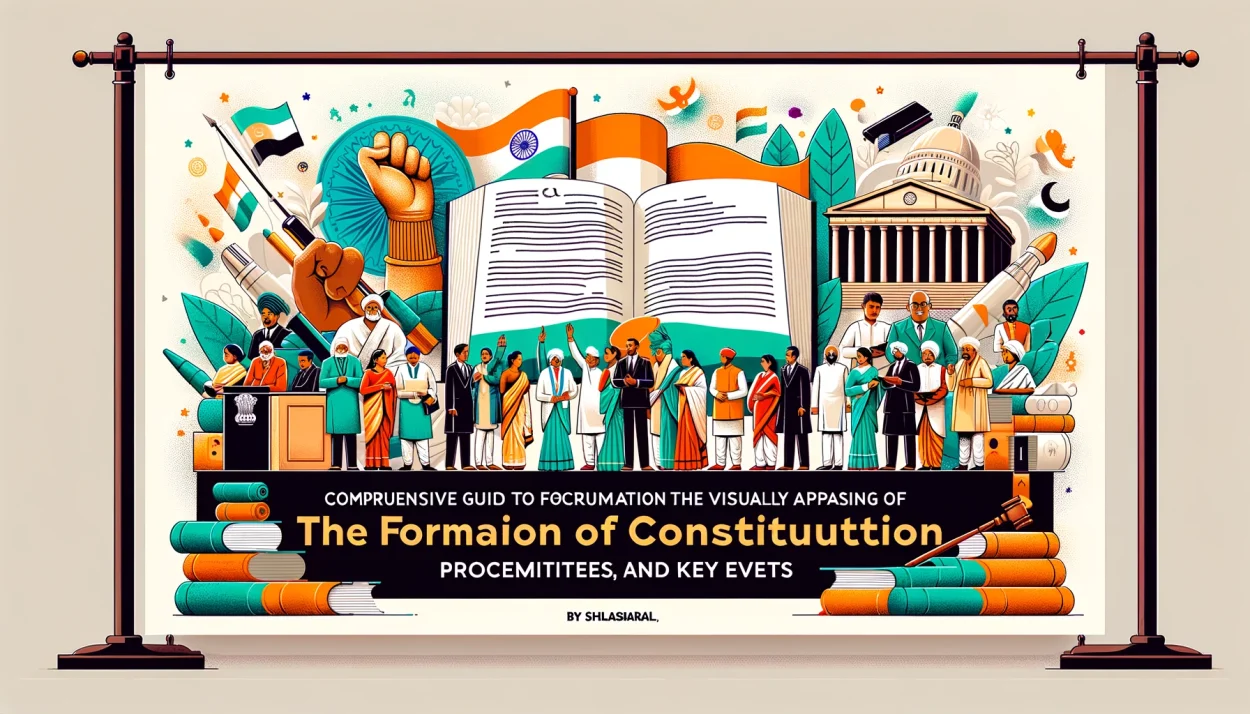
“Comprehensive Guide to the Formation of India’s Constitution: Process, Committees, and Key Events”

Explain the process of making the Constitution of India?
The process of making the Constitution of India was extensive and methodical, taking place over several years with a structured approach that included various stages:
- Initial Steps and Objectives Resolution: The Constituent Assembly first met on December 9, 1946, marking the formal start of the process. On December 13, 1946, Jawaharlal Nehru moved the Objectives Resolution, which laid down the underlying principles of the constitution-making process, and it was adopted on January 22, 1947.
- Committee Formation and Reports: After the first session, the Assembly formed committees to address different aspects of the Constitution, such as fundamental rights, minorities, and administrative details. These committees provided reports from April to August 1947, which included recommendations for the Constitution’s content.
- Drafting the Constitution: B.N. Rau, the Constitutional Adviser, prepared an initial draft by October 1947 based on the committee reports and Assembly discussions. The Drafting Committee then began scrutinizing this draft and making changes where necessary, finalizing it in February 1948.
- Public Involvement: The first draft was circulated publicly, inviting comments and suggestions, which were considered by a special committee. This led to a revised draft incorporating public and expert feedback.
- Discussion and Adoption of the Draft: B.R. Ambedkar presented the revised draft to the Assembly on November 4, 1948. The Assembly engaged in clause-by-clause discussion and reading, making amendments along the way. This discussion went on until October 17, 1949.
- Finalization: After extensive debates and amendments, the Drafting Committee revised the draft to reflect decisions made by the Assembly. The final version of the Constitution was adopted on November 26, 1949, and came into effect on January 26, 1950.
The Constituent Assembly was a diverse body with representatives from various sections of society, including different religions, castes, and women. Despite the challenges and complexities of the time, including the partition of India, the Assembly succeeded in framing a Constitution that balanced flexibility with the need for a strong and coherent governance structure.
The structure of the Assembly initially included 389 members, which was later reduced to 299 after the partition. Members were not directly elected by the people but were chosen through provincial assemblies, and there were also representatives from princely states and chief commissioners’ provinces.
Throughout the process, the Assembly also took on other functions, such as adopting national symbols and ratifying India’s membership in the Commonwealth.
This thorough and inclusive process ensured the creation of a constitution that has stood the test of time, embodying the values of justice, liberty, equality, and fraternity, and outlining the fundamental political principles of the newly independent nation.